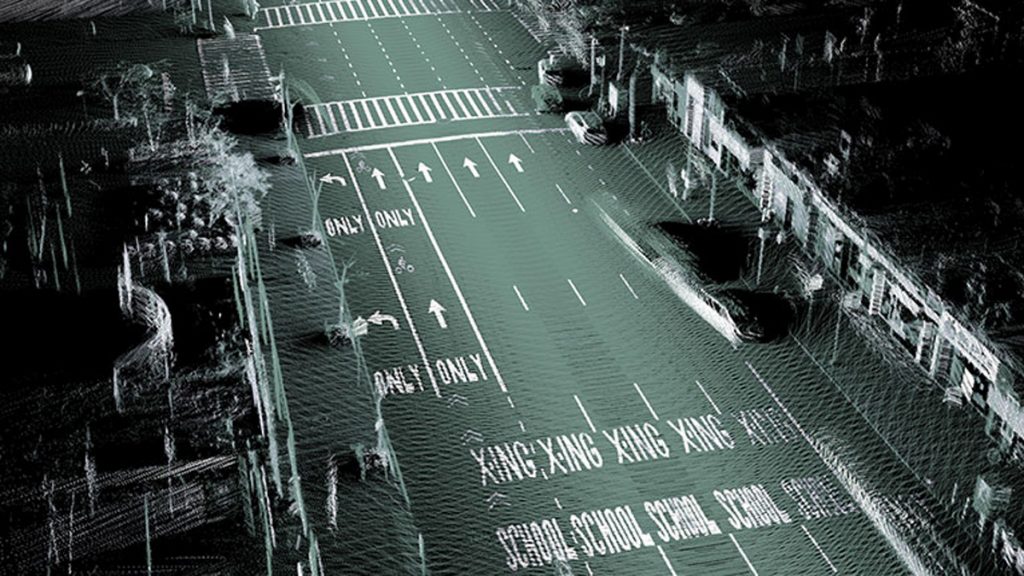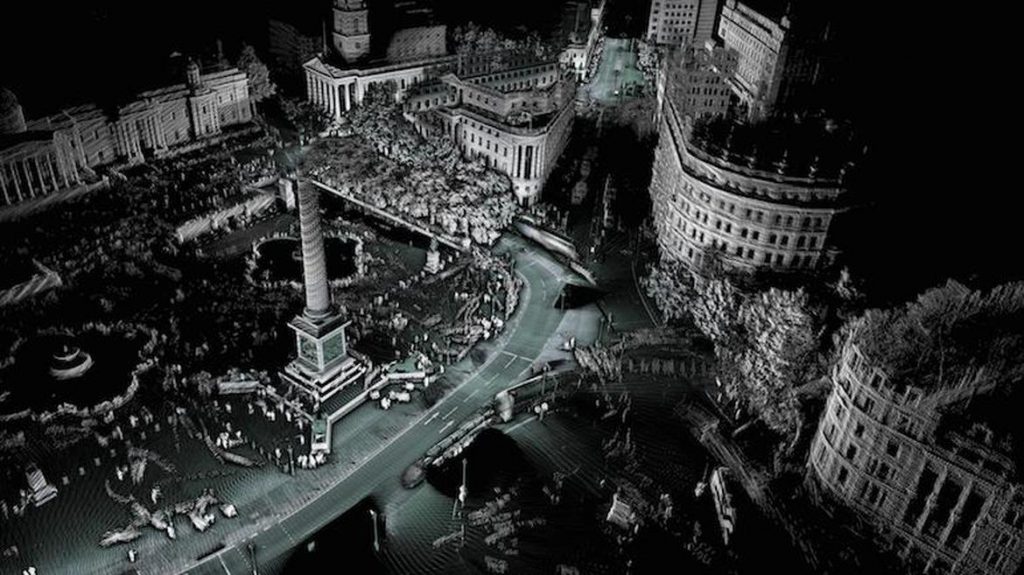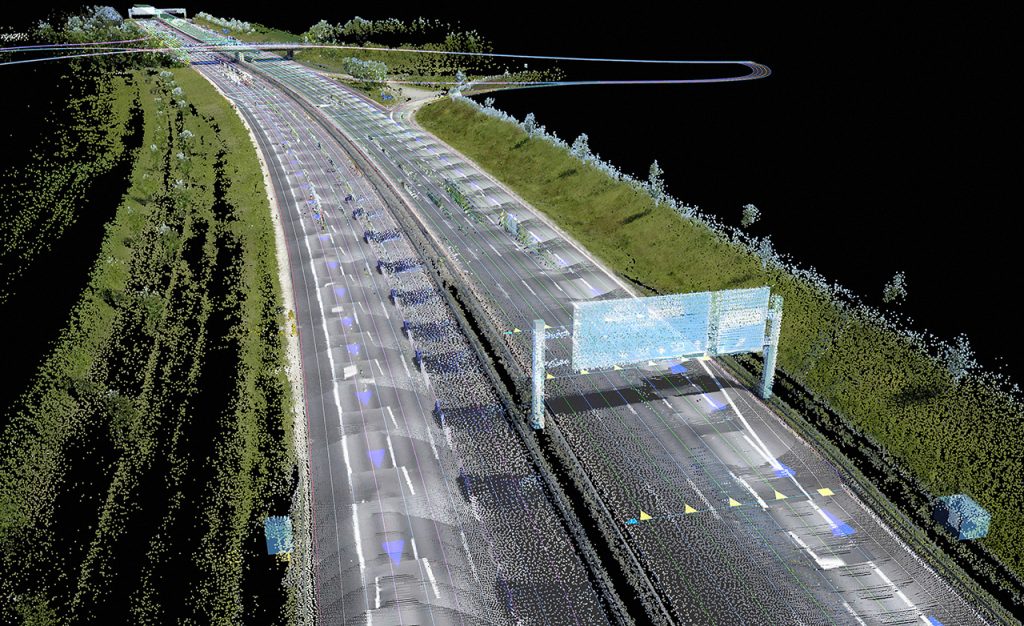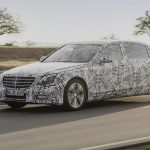Jonathan Sampson, of Automate, explains why HD mapping is about to take semi-autonomous cars to new heights.
Five minutes after midnight on a quiet German Autobahn is a mighty interesting place to be. Lit by a thousand glowing lamps and ungoverned by anything as archaic as a speed limit, these concrete colossi play host to some incredible power games after dark. Seemingly goaded by the cover of night, the bürgermeisters of the German motoring scene come out to play, turning the outside lane into their own personal hyperspace channel, and that makes for some fairly surreal encounters of the rapid kind.
Except, these days, being passed by a shadowy, two-tonne hulk of German metal, travelling on the exciting side of 140mph, isn’t the most intriguing thing that can happen to you during a night-time Autobahn strafe. Because, if you find yourself in just the right place, at just the right time, you’ll witness something even more spooky.
On the A8 Autobahn just a few minutes west of Stuttgart, I had my close encounter of the autonomous kind. At first glance, the black Mercedes-Benz cruising mightily at a brisk 130mph looked like any other W222 S-Class. But as it pulled alongside, I couldn’t help but stare in amazement at the car, with two engineers in the front seats busily beavering away on laptops, while the car gracefully steered itself around the sweeping curves of the motorway, and gathered road data from the spinning laser-radar mounted incongruously on the roof.

Yes, as luck would have it, I’d stumbled across a prototype version of a car that will represent the auto industry’s most advanced effort yet to bring the dream of driverless cars to fruition. Welcome, everyone, to the semi- autonomous, 2018 Mercedes-Benz S-Class.
Revealed to journalists just a few days after my sighting, the new S-Class is Mercedes jostling itself right towards the front of the pack of automakers racing to develop semi-autonomous driving systems. And as it happens, the new S is also doing its bit to reestablish some kind of order in the Benz model hierarchy.
Enthusiasts of the marque will no doubt remember that the S-Class has always been Benz’s undisputed technocrat, a showcase for the company’s latest and greatest engineering breakthroughs. ABS, ESP, adaptive airbags, even crumple zones – they’re all S-Class innovations. But such is the pace of change in the industry these days, that for the past year or so, the big S has had to cede its crown to the new E-Class, which launched with a more sophisticated suite of driverless systems than were available on the older flagship.
That changes right now. A host of upgrades to the hard- and software systems that make up the ‘Drive Pilot’ system mean this S will be the industry, and company, front-runner in the driverless game, and the most significant advance is surely the introduction of high-definition mapping – a breakthrough made possible, rather oddly, by Nokia of all companies.
That might seem a little strange, but in actual fact Nokia is one of the biggest players in Germany’s autonomous car development programs right now. That’s because last August, Audi, BMW and Mercedes all chipped in a combined $3.1 billion to purchase HERE, a Nokia spin-off company that specialises in generating ultra-HD map data. But why?

Well, it’s no distortion of the truth to suggest that HD mapping is the key that will unlock the next stage of progress for driverless cars, and the reason is quite straightforward. So far, all production semi- autonomous systems have relied on sensor data to paint a picture of the car’s immediate surroundings. Typically, across the industry, a combination of cameras, radars and LIDARs function as the car’s eyes and ears, allowing it to ‘see’ and then avoid obstacles and other vehicles. The trouble is that these systems are, by their very nature, reactionary – they have no capacity to ‘anticipate’ anything beyond their field of vision. And being susceptible to visual interference from dirt and heavy rain, they can be less than 100% reliable.
However, giving an autonomous car the ability to ‘know’ what’s ahead, rather than merely ‘seeing’ it, adds a whole new layer of sophistication and protection, and that’s exactly what Mercedes has done with the new S-Class. Thanks to more than 1.8 million miles of map data logged by HERE’s engineers, which is then stored in the S- Class’ brain, the big Merc is now able to locate itself to within roughly 10cm of its actual position on the globe – a massive advance compared to the 1m accuracy previously attainable with traditional GPS. What’s more, it can then use that incredibly detailed map data to pre-emptively make driving decisions in ways that the older, sensor-based system never could. In other words, by having a pre-loaded picture of kerbs, traffic islands, speed bumps and just about everything else you can imagine near a road, the car can know where it is, where it’s going and what to do like never before.
Now, at this point you’ll need to brace yourself, because if there’s one thing Mercedes does better than driverless technology, it’s giving these systems interminable names. So… on top of Active Lane Change Assist (which will pull-off a hands-free, Tesla-style auto lane change) and Active Steering Assist (which helps keep you in your lane), the S-Class premieres Active Distance Assist Distronic. This is the tech that makes full use of HERE’s map data, and as a result it can now slow the car automatically for corners, roundabouts etc. without needing to follow the lead of surrounding cars. The whole idea is to make the Drive Pilot’s reactions far smoother and more natural for those on board, and it means that for the first time, buyers will be able to buy a semi-autonomous car that will have advance knowledge of the roads it’s about to set off on. And that means this system will be more reliable and quicker to respond than any other system we’ve seen before.
Interestingly, these early-adopters will also be helping other future owners, because the car will constantly compare its map data with what it ‘sees’ through its cameras and radars, and send the info back to HERE to improve the accuracy of HD imaging. And with each improvement, HERE will be able to push map updates back to the car via the cloud, as well as any new areas that have been mapped recently. Currently, HERE is mapping more than 100,000 miles of roads every year, and expect that to keep increasing as the tech catches on.

So, evidently, HD mapping has huge potential – already, a Mercedes S500 prototype fitted with HERE mapping managed to autopilot 62 miles through Germany without any driver input, and Audi used HD maps of the Hockenheim race circuit to hot lap an autonomous RS7. So it really does work.
Of course, we are still a long way from full-on, shut-your-eyes-and-read-a-periodical autonomy. Even this latest S needs full driver attention because, while the Drive Pilot is cleverer than ever, it’s not perfect – for example, even though the car now knows the roundabout is there, it doesn’t know whether cars are actually in the roundabout until its sensors pick them up, which can occasionally trick the system. And until the tech is totally infallible, the driver is still the captain.
If I’m honest, I’m still skeptical that drivers will ever be permanently relegated to co-pilot status, because there are so many variables for autonomous cars to respond to that I can’t imagine how lawmakers are ever going to OK a full driverless system. But do not doubt the resolve of these companies to achieve this ambitious goal, and one thing’s for sure – high-definition, 3D mapping is helping them find the way there.










